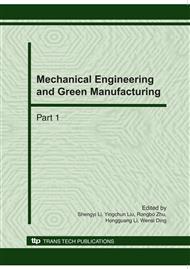[1]
Mastroianni Carlo, , . Talia Domenico Verta Oreste A super-peer model for resource discovery services in large-scale grids[J]. Future Generation Computer Systems, , : 2005 21(10) 1235-1248.
DOI: 10.1016/j.future.2005.06.001
Google Scholar
[2]
Vincenzo Di Martino. Scheduling in a grid computing environment using genetic algorithm. Marco Mililoti the 16th Int'1 Parallel and Distributed Processing Symp, New York , USA: American Scholar Press, 2002: 359-367.
DOI: 10.1109/ipdps.2002.1016654
Google Scholar
[3]
Wensheng Yao, Genetic Scheduling on Minimal Processing Elements in the Grid[M]. Springr-Verlag Heidelberg, (2002).
Google Scholar
[4]
T. Defanti,I. Foster, and T. Kuhfuss. Overview of the I-WAY: Wide Area Visual Supercomputing.
Google Scholar
[5]
Bao-Yan Song, Gao Nan, Li Xiaoguang, XUE Jian-sheng. DLRD: a support dynamic load balancing in P2P grid resource discovery mechanism [J]. Journal on Communications. 2008, ( ) :29 8 94-99.
Google Scholar
[6]
Nazareno Andrade, , Lauro Costa et a1.Peer-to-peer grid computing with the ourgrid community[C]. . , Proc of the SBRC 2005 Brazil 2005: 1-8.
Google Scholar
[7]
Talia D, .Trunfio P Peer-to-peer protocols and grid services for resource discovery on grids[J].Grid Computing: , The New Frontier of High Performance Computing Advances in Parallel Computing, , : 2005 14(2) 1232-1243.
DOI: 10.1016/s0927-5452(05)80007-3
Google Scholar
[8]
Simon G M Koo, Karthik Kannan, CS George Lee. On neighbor-selection strategy in hybrid peer-to-peer networks [J]. Future Generation Computer Systems, 2006, 22(3): 732-741.
DOI: 10.1016/j.future.2006.02.015
Google Scholar
[9]
Hiroaki Kobayashi, Hiroyuki Takizawa, et al. A self-organizing overlay network to exploit the locality of interests for effective resource discovery in P2P systems[C]. Sendai, Japan: Proceedings of the 2005 Symposium on Applications and the Internet, 2005, pp.246-255.
DOI: 10.1109/saint.2005.8
Google Scholar
[10]
Lei Guo, Song Jiang, et al. Fast and low-cost search schemes by exploiting localities in P2P networks[J]. Journal of Parallel and Distributed Computing, 2005, 65(6): 729-742.
DOI: 10.1016/j.jpdc.2005.01.007
Google Scholar


